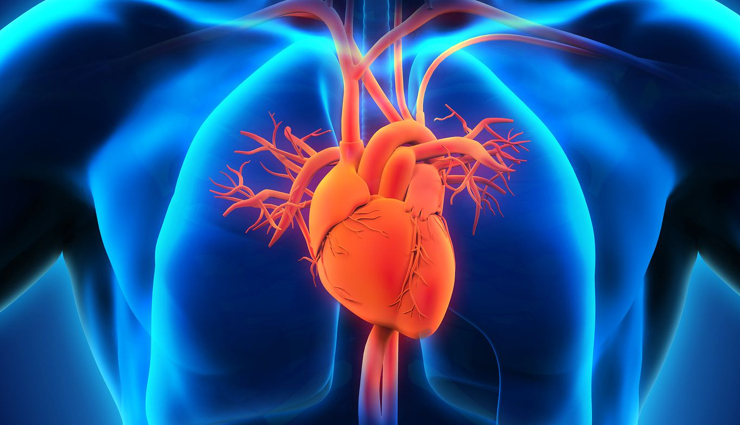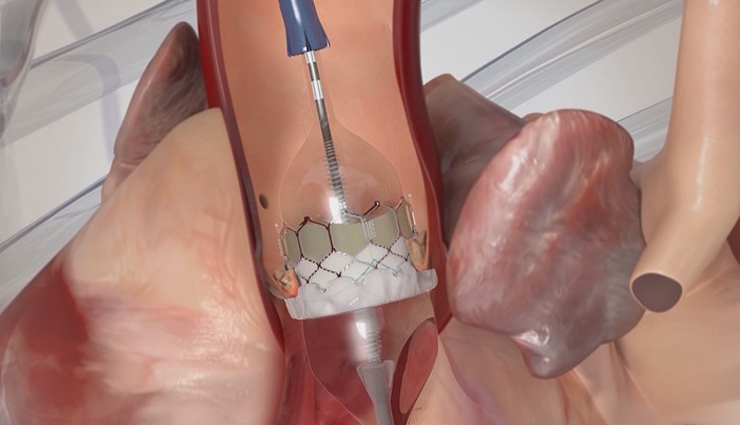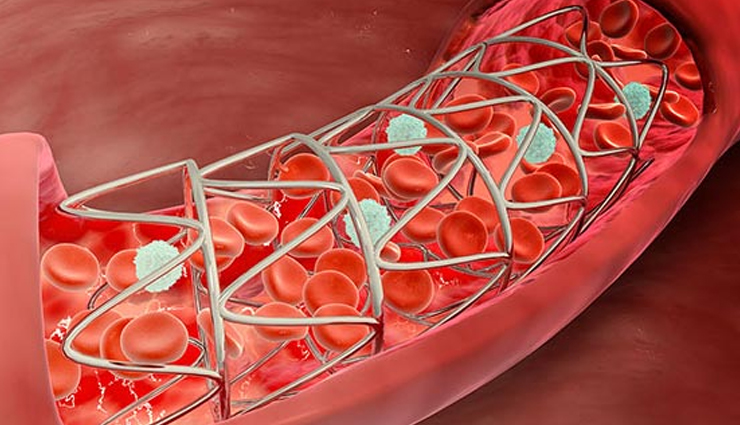- Home›
- Healthy Living›
- What Is Aortic Stenosis? Symptoms, Causes, Diagnosis, Treatment, And Prevention
What Is Aortic Stenosis? Symptoms, Causes, Diagnosis, Treatment, And Prevention
By: Priyanka Maheshwari Fri, 06 Oct 2023 1:40:12

Aortic stenosis, also referred to as aortic valve stenosis, is a heart condition where the aortic valve narrows, hindering its full opening. This restriction disrupts or reduces blood flow from the heart to the aorta, the body's primary artery, and the rest of the body. Consequently, the heart has to work harder than normal.
This diminished blood flow can lead to severe health complications. Common signs and symptoms of aortic stenosis include:
- Chest pain
- Breathlessness or difficulty breathing
- Fainting, dizziness, or lightheadedness
- Rapid or fluttering heartbeat
- Swollen feet or ankles
- Quick fatigue during regular activities, such as walking
- Sleep disturbances
It's worth noting that not everyone with aortic stenosis exhibits noticeable symptoms. Many individuals may not experience any symptoms until the restricted blood flow becomes significant. If you do encounter symptoms, it is crucial to consult your doctor. They can assess the severity of aortic stenosis and evaluate any potential reduction in heart function.

Symptoms of aortic stenosis in infants and children due to a congenital defect include:
- Inability to gain weight
- Fatigue during normal activities
- Difficulty feeding
- Trouble breathing
Causes and Risk Factors of Aortic Stenosis
There are many causes of aortic stenosis. These include:

# Calcification of the Valve
In elderly individuals, the narrowing of the aortic valve, resulting in restricted opening, can happen due to scarring or calcium deposits damaging the valve.
# Congenital Issues
In younger individuals, the primary cause of aortic stenosis is a congenital defect called bicuspid aortic valve, where only two valve cusps (flaps or folds) develop instead of the typical three.
# Rheumatic Fever
Rheumatic fever, which is a complication of strep throat, can lead to the formation of scar tissue on the aortic valve, causing it to narrow.
Risk Factors
Risk factors for aortic stenosis include:
- Aging
- Congenital heart disease
- Infections that affect the heart
- Diabetes
- High cholesterol
- High blood pressure
- Chronic kidney disease
- Radiation therapy to the chest

How Is Aortic Stenosis Diagnosed?
Initially, your healthcare provider will inquire about your symptoms, review your medical history, and conduct a physical examination, including listening to your heart using a stethoscope.
Subsequently, your healthcare provider might recommend several tests to diagnose aortic stenosis, including:
Echocardiogram: This imaging test utilizes sound waves to create a picture of your heart, allowing your doctor to assess the functioning of your heart valves.
Electrocardiogram (ECG or EKG): This test measures the electrical activity in your heart.
Chest X-Ray: This can reveal if your heart and aorta are enlarged and whether there is calcium buildup on your aortic valve.
Exercise Test: Evaluating your physical fitness can help doctors identify symptoms related to aortic valve disease.
Cardiac Computerized Tomography (CT) Scan: A series of X-rays are taken to generate detailed images of your heart.
Cardiac Magnetic Resonance Imaging (MRI): Magnetic fields and radio waves create intricate images of your heart, aiding in determining the severity of your condition.
Prognosis of Aortic Stenosis
Aortic stenosis may be mild and not cause any symptoms, or it can lead to serious heart problems.
- Appropriate treatment often has excellent results.
- Duration of Aortic Stenosis
- Aortic stenosis due to aging usually begins after you turn 60; however, you may - not experience symptoms until age 70 or 80.
As such, you may experience aortic stenosis for decades without realizing it.
- Treatment and Medication Options for Aortic Stenosis
- Treatment for aortic stenosis varies based on the severity of your condition, whether you’re symptomatic, and if your condition is worsening.
If your symptoms are mild, your healthcare provider may keep an eye on your condition with regular appointments. They may also recommend heart-healthy lifestyle changes and certain medications.
If your aortic stenosis is severe, treatment options may include replacing the aortic valve.
Medication Options
Your healthcare provider might prescribe medications to alleviate your symptoms and prevent further complications, especially if your condition is mild or if surgery isn't an option.
These prescribed medications could include:
Anti-arrhythmic medications: These help maintain a normal heart rhythm when irregular heartbeats (arrhythmias) occur.
Anticoagulants or blood thinners: These medications reduce the risk of blood clots.
Beta-blockers: These drugs lessen the heart's workload and reduce palpitations.
ACE Inhibitors: These medications are used to lower blood pressure in the presence of hypertension.
Diuretics: These drugs reduce fluid in the tissues and bloodstream.
Vasodilators: These medications open and relax the blood vessels.

Surgery
Surgical methods to address aortic valve stenosis comprise:
Aortic Valve Replacement: Aortic valve replacement is commonly required to treat aortic valve stenosis. This surgical procedure involves the removal of the damaged valve and its replacement with either a mechanical valve or a valve crafted from cow, pig, or human heart tissue. If a mechanical valve is used, lifelong blood-thinning medications are necessary to prevent blood clots.
Transcatheter Aortic Valve Replacement: Transcatheter aortic valve replacement (TAVR) is a minimally invasive procedure where doctors utilize a catheter to replace a narrowed aortic valve. TAVR might be the preferred choice if you are at high risk of complications from traditional surgical aortic valve replacement.
Aortic Valve Repair In rare cases, surgeons repair an aortic valve to treat aortic stenosis.

Balloon Valvuloplasty:
In treating aortic valve stenosis in infants and children, physicians might insert a catheter with a balloon at the tip through an artery in the arm or groin, guiding it to the aortic valve. They then inflate the balloon, expanding the narrowed valve opening. For adults, this procedure is usually reserved for individuals too ill to undergo more invasive surgeries like aortic valve replacement.
Prevention of Aortic Stenosis:
While congenital aortic stenosis cannot be prevented, certain measures can be taken to reduce the risk of developing the condition:
Maintain Heart Health: Keeping blood pressure, weight, and cholesterol levels in check can help prevent aortic stenosis as high blood pressure, obesity, and high cholesterol levels are associated with the condition.
Oral Hygiene: Maintaining good oral hygiene is essential. Infected gums can cause inflammation of heart tissue, aggravating aortic stenosis.
Prevent Rheumatic Fever: If you experience a sore throat, seek medical attention. Untreated strep throat can progress to rheumatic fever, a condition that can lead to aortic stenosis.
Complications of Aortic Stenosis
Initially, aortic stenosis may be mild with no symptoms.
However, over time, the following complications can occur:
- Blood clots
- Bleeding
- Heart failure
- Stroke
- Irregular heartbeat
- Infections that affect the heart
- Death
Research and Statistics: Who Has Aortic Stenosis?
Aortic stenosis is most commonly diagnosed in older adults, but some babies are born with it. Roughly 2 percent of adults over age 65 have the disease. The condition is more common in men than in women.
BIPOC Communities and Aortic Stenosis
Aortic stenosis may be underdiagnosed within BIPOC (Black, Indigenous, and People of Color) populations. A 2020 study revealed that patients from underrepresented racial and ethnic groups, including Black, Hispanic, and Asian individuals, are less frequently diagnosed with aortic stenosis compared to white patients, despite having more traditional risk factors such as chronic kidney disease, hypertension, obesity, and diabetes.
This disparity in diagnosis rates might be due to the condition often being overlooked in these patients. Furthermore, the study indicated that individuals from underrepresented racial and ethnic groups are less likely than their white counterparts to undergo aortic valve replacement surgery. However, if they do undergo the surgery, they are more prone to post-surgery complications, including bleeding, worsening heart failure, and hospital readmissions. Patients from underrepresented groups with severe aortic stenosis also face a higher risk of morbidity and mortality when compared to white patients.





